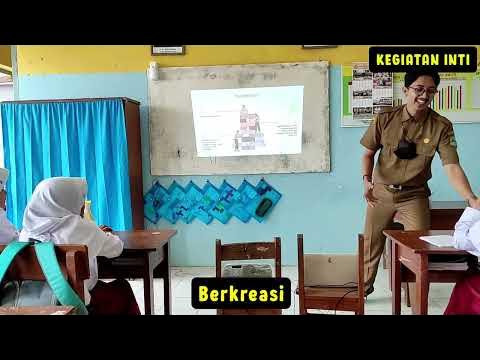What is the SAMR Model and what does it look like in schools?
Summary
TLDRThe SAMR model explores the impact of technology on student learning, emphasizing its integration with pedagogy. It outlines four layers: substitution, where technology replaces traditional tools without significant change; augmentation, which adds functionality like collaborative commenting; modification, where tasks are redesigned for digital formats, such as turning an essay into a blog post; and redefinition, enabling entirely new tasks like creating multimedia packages and engaging with global audiences. As one ascends the model, technology's transformative potential in education increases.
Takeaways
- 🌟 Technology has the potential to significantly transform student learning experiences.
- 📚 The SAMR model is a framework that examines the integration of technology into pedagogy.
- 📈 The model consists of four layers: Substitution, Augmentation, Modification, and Redefinition.
- 💻 In Substitution, technology serves as a direct replacement without altering the task's nature.
- 🔍 With Augmentation, technology enhances the task with additional functionalities, like collaborative commenting in Google Docs.
- 🛠️ Modification involves a significant redesign of the task, such as turning an essay into a blog post for a broader audience.
- 🌐 Redefinition allows for the creation of new tasks that were not possible before, like producing a multimedia package.
- 🤝 At higher levels of the SAMR model, technology enables more interactive and collaborative learning experiences.
- 🌐 The highest level of the SAMR model emphasizes global communication and multimedia content creation.
- 📈 As one moves up the SAMR model, the use of technology becomes more transformative and impactful on learning.
Q & A
What is the primary focus of the SAMR model?
-The SAMR model focuses on the intersection of technology and pedagogy, aiming to understand how technology can be effectively integrated into teaching and learning processes.
How many layers does the SAMR model have?
-The SAMR model has four different layers, each representing a different level of technology integration into educational tasks.
What is the purpose of the first two layers of the SAMR model?
-The first two layers of the SAMR model are designed to enhance the learning task, providing direct substitution and some functional improvements without significant changes to the task itself.
Can you provide an example of the 'Substitution' layer in the SAMR model?
-An example of the 'Substitution' layer is a student typing an essay on a computer instead of writing on paper, which is a direct substitution with no significant change.
What does the 'Augmentation' layer involve?
-The 'Augmentation' layer involves using technology as a substitution with some functional improvement, such as using Google Docs to write an essay and allowing classmates to leave comments.
How does the 'Modification' layer differ from the previous layers?
-The 'Modification' layer allows for significant task redesign, transforming the nature of the task, like turning an essay into a blog post that involves online research, shared editing, and publishing to an authentic audience.
What is the highest level of the SAMR model and what does it enable?
-The highest level of the SAMR model is 'Redefinition,' where technology enables new tasks that were previously inconceivable, such as creating multimedia packages that include blog posts, podcasts, and videos.
What is an example of a task at the 'Redefinition' layer?
-An example of a task at the 'Redefinition' layer is students not only researching online but also connecting with experts through video conferencing and co-writing blog posts with a global cohort, producing a blog post, podcast, and video.
How does the SAMR model help in understanding the transformative potential of technology in education?
-The SAMR model helps in understanding the transformative potential of technology in education by outlining how technology can move from being a mere tool to a catalyst for creating new learning experiences and outcomes.
Why is it important to move up through the layers of the SAMR model?
-Moving up through the layers of the SAMR model is important because it signifies a shift from using technology to enhance traditional tasks to leveraging it for creating innovative, interactive, and engaging learning experiences.
How does the SAMR model relate to the creation of multimedia content in education?
-The SAMR model relates to the creation of multimedia content in education by showing the progression from simple substitution to the redefinition of tasks, which often involves the production of multimedia content like videos and podcasts.
Outlines

Cette section est réservée aux utilisateurs payants. Améliorez votre compte pour accéder à cette section.
Améliorer maintenantMindmap

Cette section est réservée aux utilisateurs payants. Améliorez votre compte pour accéder à cette section.
Améliorer maintenantKeywords

Cette section est réservée aux utilisateurs payants. Améliorez votre compte pour accéder à cette section.
Améliorer maintenantHighlights

Cette section est réservée aux utilisateurs payants. Améliorez votre compte pour accéder à cette section.
Améliorer maintenantTranscripts

Cette section est réservée aux utilisateurs payants. Améliorez votre compte pour accéder à cette section.
Améliorer maintenantVoir Plus de Vidéos Connexes

SAMR Model and the Mathematics Classroom Catherine Olson ET520.webm

2. Membawa Teknologi Adaptif ke Ruang Kelas (Teknologi)

Cara Mengintergrasikan TPACK dalam Pembelajaran (Technological Pedagogical Content Knowledge)

Model Pembelajaran Think Pair Share (TPS) Berbasis Sosial Media

Media Pembelajaran | Model ASSURE

Disruptive Pedagogy in Higher Education Landscape
5.0 / 5 (0 votes)
